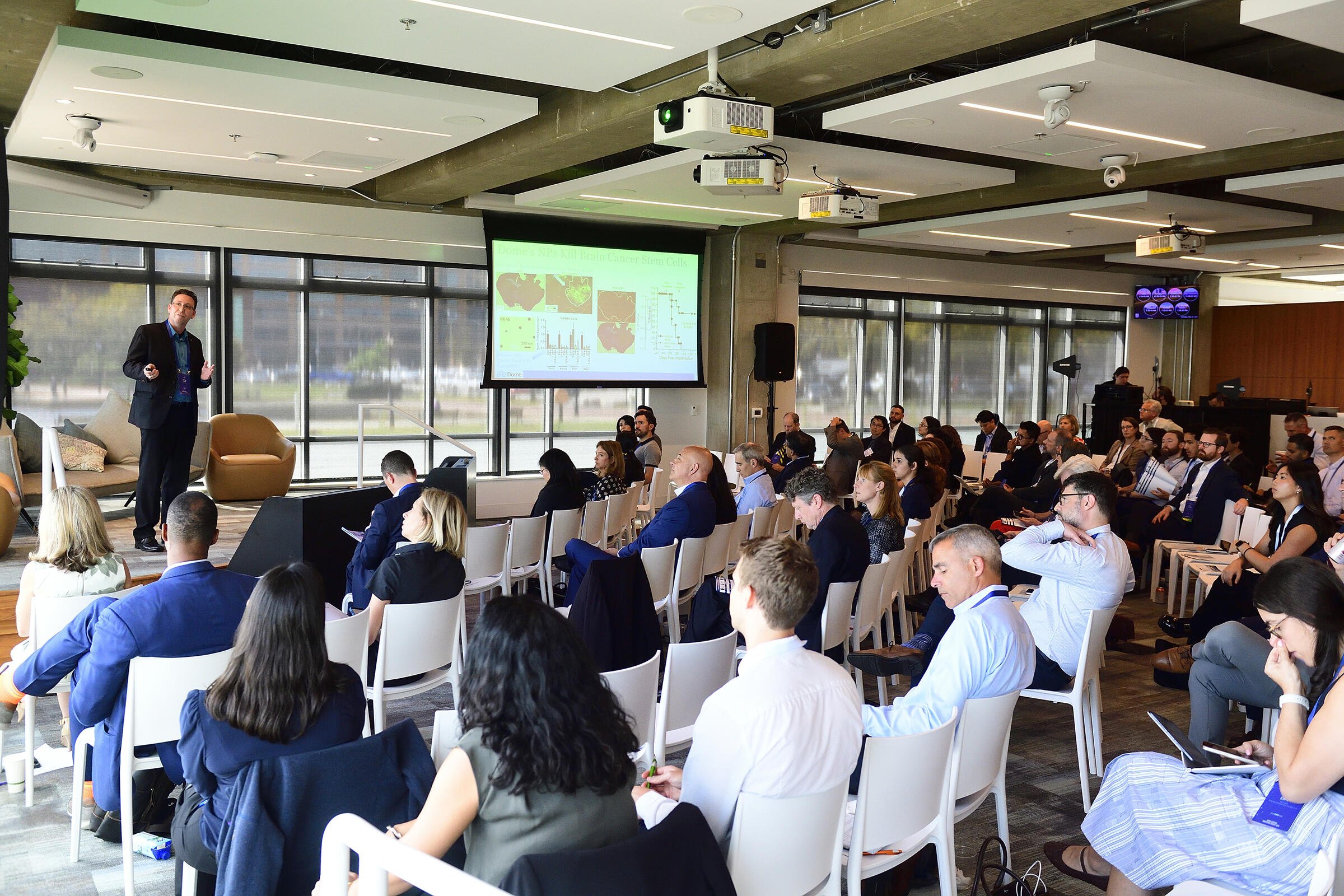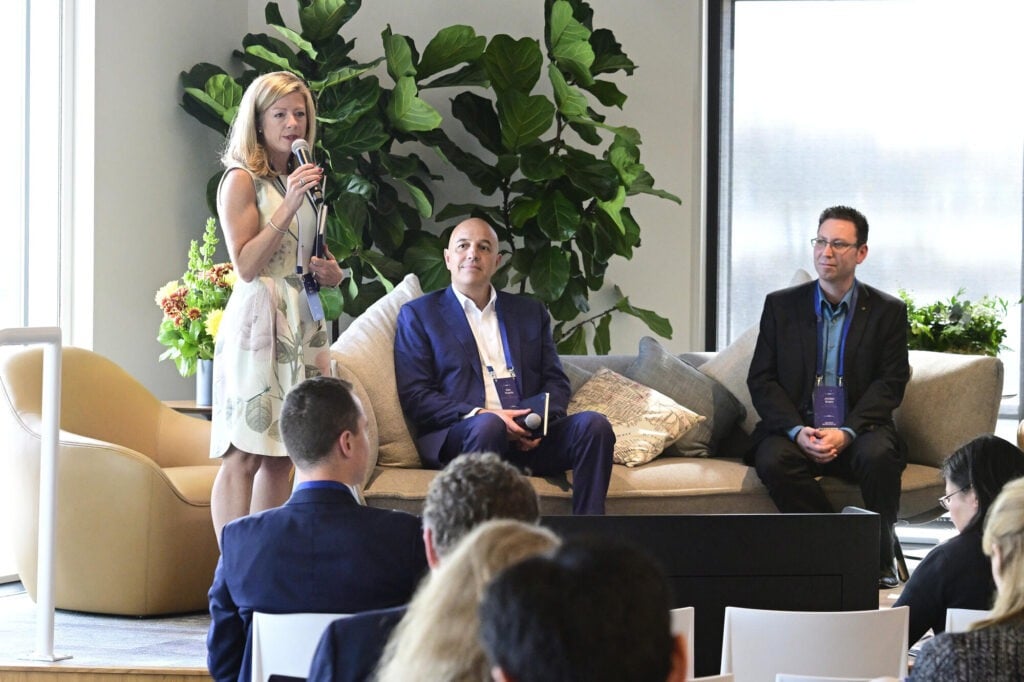Velculescu, who first arrived at Hopkins as a combined doctoral-medical degree student in 1992, said Johns Hopkins has rapidly expanded its abilities to help scientist-entrepreneurs.
“There has been a sea change at Johns Hopkins,” he said.
Today, Johns Hopkins Technology Ventures touts a portfolio of 131 startups that have raised $4.8 billion in capital and achieved 45 company exits.
For example:
- Somnair, founded by Johns Hopkins alumni Mitchell Turley and Anders Sideris in the Center for Bioengineering Innovation and Design master’s program, offers a custom-fitted, mouthguard-like device to treat obstructive sleep apnea.
- Iris Gupta, who earned her bachelor’s degree from Johns Hopkins in May in computer science and economics, founded CounselAI, an AI platform that streamlines legal discovery across reams of documents.
- Alex Marder, an engineering professor in JHU’s Whiting School of Engineering, started Revalare, a software that detects unsecured cell towers manufactured by foreign companies and automatically redirects phones to secure connections, preventing user data from being accessed by overseas adversaries.
“JHTV serves as a front door for campus innovators and external partnerships alike, ensuring productive collaboration between Johns Hopkins, the government, and industry—a tripartite alliance that leverages the strengths of each sector to save lives,” said Christy Wyskiel, executive director of JHTV and senior adviser to the president of Johns Hopkins University for innovation and entrepreneurship.
JHTV’s portfolio represents 314 active products, 330 products in development, and 3,805 patents. Its 97 licensing agreements with companies generated $59 million in revenue in fiscal year 2025, according to its annual report.
In addition, Johns Hopkins research projects help to fuel the research and development pipelines of more than 70 corporate partners, including Amazon and Novo Nordisk.
The Johns Hopkins Amazon Initiative for Interactive AI is in its third year and supports 14 doctoral fellows and 23 research awards. It advances innovation, collaboration. and commercialization in AI research. In collaboration with Novo Nordisk and Evotec, Johns Hopkins joined a translational drug discovery accelerator program whose mission is to advance academic discoveries.
In 2024, 18 new startups were added to JHTV’s portfolio, raising more than $130 million in venture capital, with 56% of that investment staying in Baltimore. For example, Sonavex Technologies secured $15 million in financing and was included among Time magazine’s Best Inventions of 2024.
At last year’s innovation summit, Benjamin Larmin, a professor of pathology at the Johns Hopkins School of Medicine, pitched his company Infinity Bio, which specializes in antibody profiling. It raised $8 million in financing led by Illumina Ventures.
This year, more researchers were pitching their science, especially in the field of immunotherapy.
One company, Adventris Pharmaceuticals, partners with cancer Hopkins research Elizabeth Jaffee to develop off-the-shelf vaccines for cancers. The company plans to apply a vaccine in development to its first patient next year.
Jaffee, deputy director of the Sidney Kimmel Comprehensive Cancer Center, has been a vocal champion for the federal research pipeline that has faced unprecedented cuts this year, especially from the National Institutes of Health.
“Due to the investments at the NIH [into] the new technologies, we’re in a technological revolution in cancer research,” Jaffee said at a recent event touting the promise of mRNA research and therapies. “If we can push this vaccine method forward, we will definitely have an impact in cancer that’s going to be unexpected but almost miraculous over the next five to 10 years.”
As for cuts to NIH funding, she added: “We don’t have a lot of funding for doing these trials beyond the National Institutes of Health. The way things are going, I have to be honest, you’re told a day in advance that your grant is cut, so it will be an acute change for patients who are currently being treated in our clinical trials.”
This story originally appeared in the Hub.


